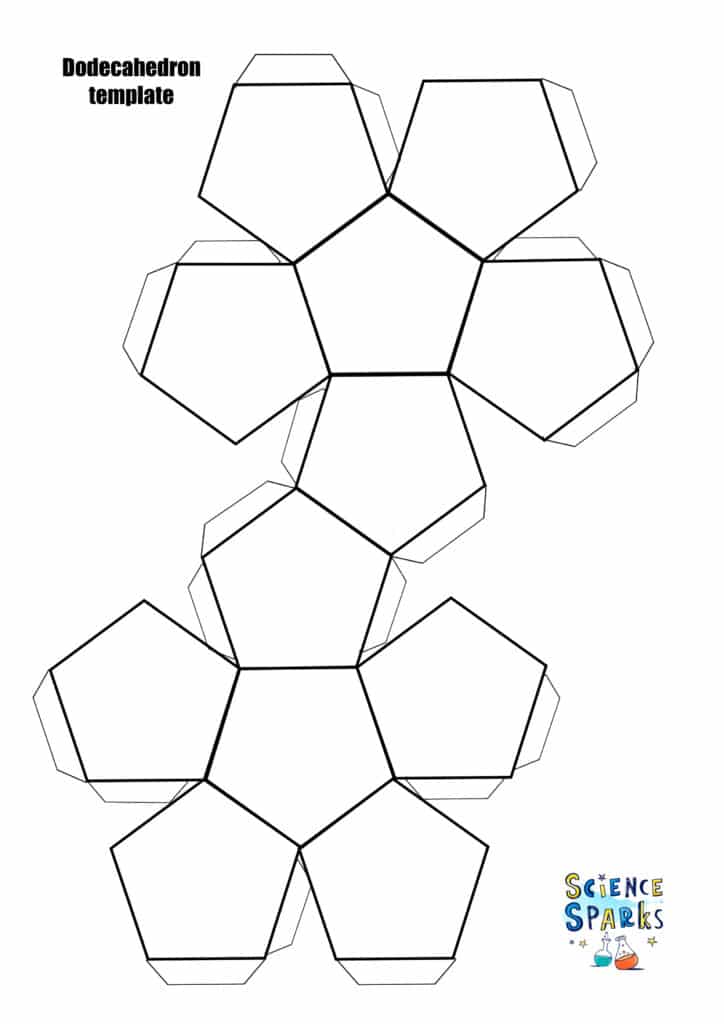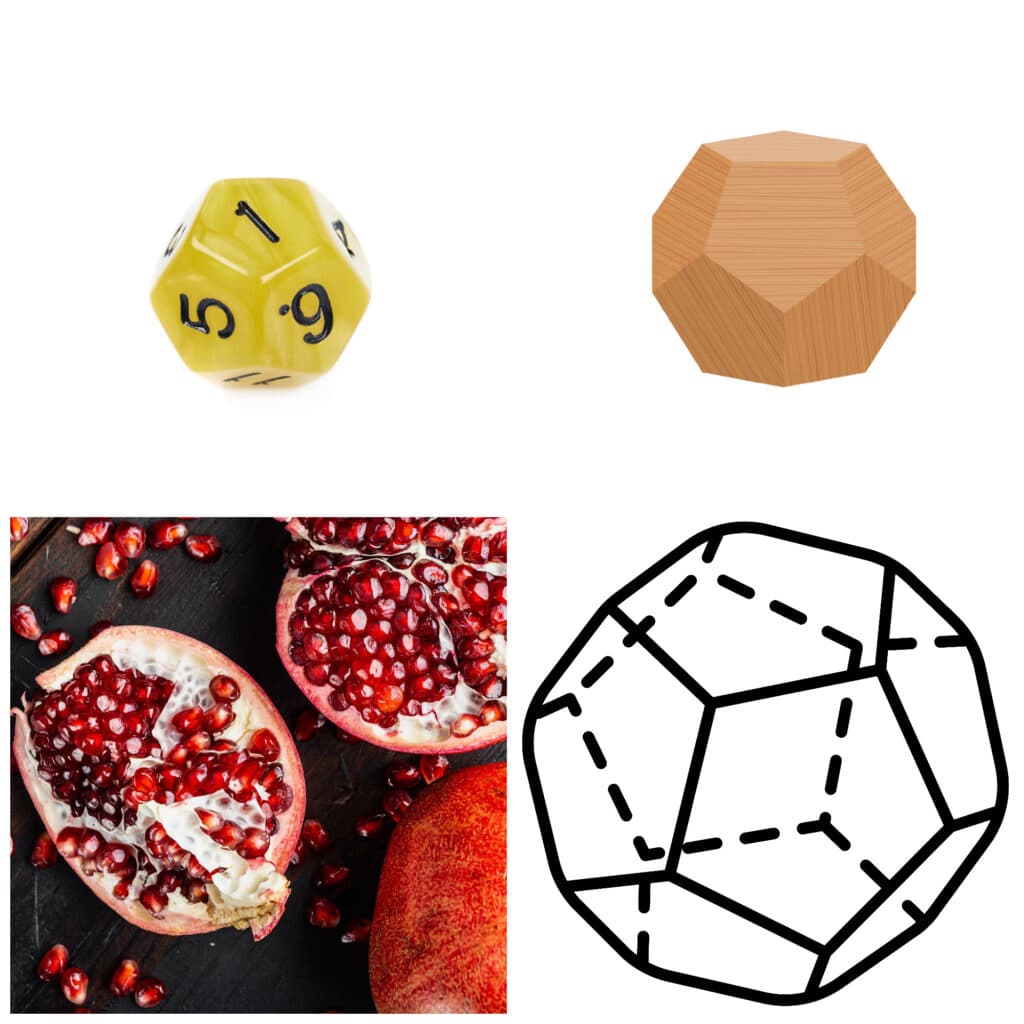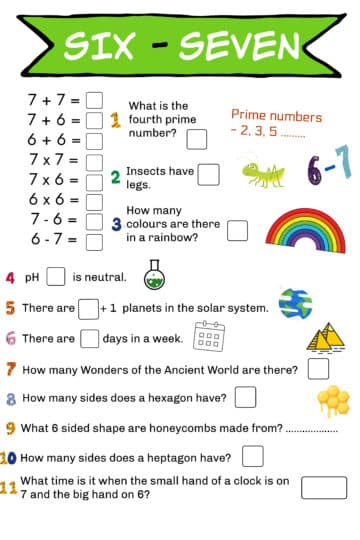A dodecahedron is a three-dimensional shape with 12 faces. The most common dodecahedron ( regular dodecahedron ) has regular pentagons for all 12 faces.
There are other types of dodecahedron are made up of shapes that aren't pentagons but still have 12 faces. These are irregular dodecahedrons.
A dodecahedron is one of five platonic solids.

Features of a regular dodecahedron
12 faces where each is a regular pentagon ( five sides of equal length and equal angles )
20 vertices ( corners )
30 edges
The sum of the angles of a dodecahedron is 6480°
How to make a dodecahedron
A dodecahedron ball is made from lots of five-sided pentagons.
You'll need
Paper
Scissors
Tape
Instructions
Print or trace the template onto paper and carefully cut out the template.
Fold the tabs and lines where one pentagon joins another.
Fold the template into a dodecahedron.
Place double-sided tape or glue onto each tab and attach them.

Where are dodecahedrons seen in nature?
Pomegranate seeds are not perfect dodecahedrons, but pretty close.
Icosahedral viruses such as adenovirus have an icosahedral capsid. This shape is closely related to the dodecahedron.
Dodecahedrons are often seen in architecture, and you may have a dodecahedron shaped dice!

Last Updated on January 13, 2025 by Emma Vanstone




Leave a Reply